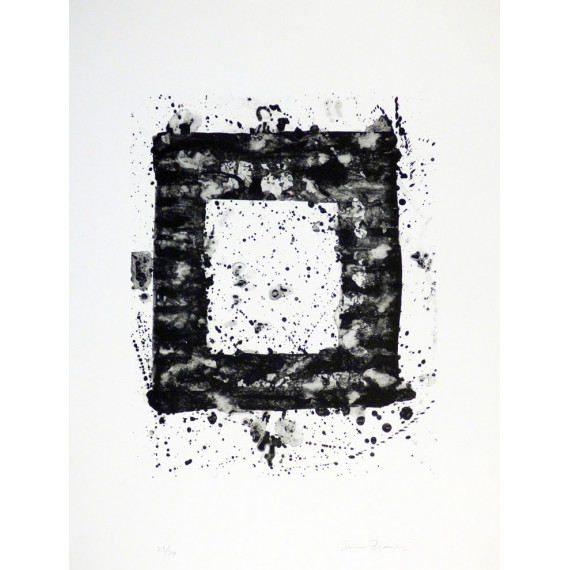
/// SAM FRANCIS (1923-1994) ///
Original etching.
Handsigned in pencil by the artist.
Handnumbered in pencil on 29 proofs
Paper size: 84 x 64 cm
Date: around 1970/75
/// Biography of SAM FRANCIS ///
Samuel Lewis Francis, known as Sam Francis, is an American painter, famous for his non-figurative painting, born June 25, 1923 in San Mateo (California), died November 4, 1994 in Santa Monica. In his paintings, he developed a new aesthetic of color, a new conception of the canvas, of the artist's gesture, thus inscribing himself in the different movements of his time initiated and developed by American artists such as Rothko, Pollock, from Kooning, Kline.
Originally, Sam Francis was not intended for an artistic career, but began studying medicine and psychology. In 1943 he joined the army as an aviator, but in 1944 his plane crashed in the middle of the desert during training. Injured, he was hospitalized for two years. It was during his hospitalization that the click for painting occurred: first to pass the time, he ended up practicing it for pleasure. He will remain convinced of the therapeutic virtues of art throughout his life, he will say in particular:
“My painting came from illness. I left the hospital through my painting. I was in pain in my body […] and it was because I was able to paint that I was able to heal myself. "
Upon discharge from hospital, he began studying art at Berkeley, then in 1946 he left for San Francisco to study with Clyfford Still, an artist he discovered during an exhibition. He and the other Berkeley students were then greatly impressed because “Still's images were organic, his colors and surfaces had nothing in common with what we had learned to regard as 'good' modern painting […] something new, something that for the most part we could not define had just appeared ”[ref. necessary].
After this first real encounter with abstract art, he left for Paris around 1948-1949. It was there that he met a number of American artists, now referred to as action painters, who would "complete" his approach. On large format canvases (to which he will pass very quickly, by need) he will borrow from them and mix various techniques: dripping, all-over, he is even qualified as a stain, a name which refers to the chance of creation: the form is stain , subject to chance, and arises spontaneously.
This new way of painting will also change his vision of the canvas. By his plane crash, he was already trying to convey that impression of infinity he had glimpsed in the desert, in this space without beginning or end. For him, the white canvas merges with the sky he had recently visited and it is therefore quite natural that he will decide to paint only the background, the place of infinity in painting. From this follows the rest of his approach: if the infinite comes from the background, then there is no need to paint figures since only the "space which extends between things" is of interest. However, this is contrary to the pictorial tradition: the background should only serve as a theatrical space for the figures, the figure / background relationship embodies the story it tells. By removing figures, Sam Francis removes the finite in order to keep only the infinite, his works are then only pieces of infinity which, for his part, continue well beyond the canvas. It thus goes beyond the notion of framework.
For Sam Francis, it is then a question of taking the side of the infinite, that figures and background occupy the totality of the pictorial space. However, this is impossible. But not if we consider that the figures can be diluted, merge very softly with the background. Similar to spots, any element allowing an interpretation having been eliminated, only the depth remains:
“Depth is all. "(Source Wikipedia)












